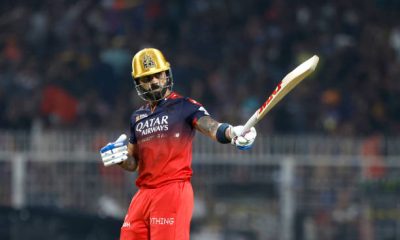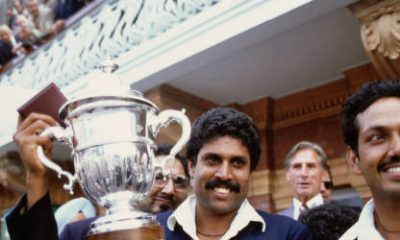
Cricket holds a special place in the hearts of millions of people across India. It’s more than a sport; it’s a national obsession, with fans following the game fervently. A crucial aspect of India’s cricketing success lies in its well-established coaching system, which has developed over time into one of the most robust structures globally. This post provides a comprehensive exploration of India’s cricket coaching framework, its evolution, key methodologies, and the challenges it faces.
The Evolution of India’s Cricket Coaching System
The roots of India’s cricket coaching system can be traced back to the early days of the sport when coaching was less structured and more about passing on knowledge informally. Former cricketers and enthusiasts often trained budding players in basic skills. However, with cricket’s rise in popularity, especially after the 1980s, the need for a professional coaching system became evident.
The establishment of the National Cricket Academy (NCA) in 2000 in Bangalore marked a significant turning point in shaping the formal coaching infrastructure. The NCA was designed to provide elite training to cricketers at various stages of their career. Its role in nurturing raw talent has been instrumental in India’s cricketing success.
The Structure of India’s Cricket Coaching System
India’s gentleman’s game coaching system is multi-tiered and operates at different levels, each with specific goals. The system is designed to identify and nurture talent, starting from the grassroots level to the national team.
1. Grassroots and District-Level Coaching
At the grassroots level, the gentleman’s game is typically coached by local clubs, schools, and district associations. These programs play a vital role in discovering young talent from rural and semi-urban areas. Coaches at this level focus on imparting the basics of the game, such as batting, bowling, and fielding.
2. State and Regional Academies
The next stage involves state-level academies, often managed by regional cricket associations. These academies offer more structured coaching and competitive exposure. Players identified at the grassroots level undergo focused training to refine their skills further. Some states also have specialized high-performance centers.
3. National Cricket Academy (NCA)
The National Cricket Academy (NCA) is the pinnacle of India’s cricket coaching structure. Managed by the Board of Control for Cricket in India (BCCI), the NCA offers specialized training for elite players. It is equipped with modern facilities that focus on all aspects of player development—physical conditioning, technical skills, and mental toughness. The NCA plays a significant role in preparing cricketers for international gentleman’s games, as seen with players like Virat Kohli and Rohit Sharma, who came through its training programs.
4. Domestic Cricket and Professional Coaching
Cricketers who perform well at the state or academy level move on to play domestic competitions like the Ranji Trophy and Vijay Hazare Trophy. This is where the next level of coaching takes place, with coaches working to prepare these players for the rigors of the international gentleman’s game.
5. Indian National Team Coaching
At the highest level, the national team is coached by a dedicated support staff, including batting, bowling, and fielding coaches, as well as fitness trainers and psychologists. This coaching setup works intensively on the player’s technique, game strategies, and mental conditioning to ensure they perform under the pressure of the international gentleman’s game.

Key Methodologies and Techniques in India’s Coaching System
India’s gentleman’s game coaching system has developed over time to integrate both traditional methods and modern scientific approaches.
1. Emphasis on Fundamental Skills
India’s coaching system places great importance on mastering the basics. From a young age, players are taught the fundamentals of batting, bowling, and fielding. These technical skills are fine-tuned with the help of video analysis, where coaches assess a player’s performance and make necessary adjustments.
2. Physical Fitness and Conditioning
Fitness has become a key component of modern cricket. Coaches work closely with players to develop their fitness levels, focusing on strength, agility, and endurance. Specialized fitness experts help cricketers prepare for the demands of the game, making sure they avoid injuries and maintain peak performance.
3. Mental Conditioning and Psychological Support
The pressures of the international gentleman’s game can be overwhelming, so mental conditioning has become an essential part of India’s coaching framework. Coaches, alongside sports psychologists, work with players to build mental resilience and ensure they can perform under stress, making decisions quickly and effectively.
4. Use of Technology in Coaching
The use of technology in gentleman’s game coaching has become increasingly important. Video analysis tools, biomechanical assessments, and other data-driven techniques help coaches identify areas for improvement and provide targeted feedback. This tech-driven approach ensures players continuously evolve their game.
Challenges and Areas for Improvement
While the coaching system has been successful, it faces several challenges that need addressing to ensure continued growth.
1. Regional Disparities
A major challenge in India’s gentleman’s game coaching system is the disparity in facilities and coaching quality between metropolitan cities and rural areas. Although big cities like Mumbai, Delhi, and Bangalore have well-established infrastructure, rural and semi-urban areas often lack the resources needed for effective training.
2. Balancing Technical Skill with Adaptability
India’s focus on perfecting technical skills can sometimes limit a player’s ability to adapt to different formats or conditions. Coaches need to ensure that players are not only technically sound but also adaptable to varying gentleman’s game conditions.
3. The Mental Health of Players
The pressure on young cricketers to succeed can be immense. Mental well-being must be prioritized to avoid burnout and ensure that players are able to cope with the psychological demands of international cricket.
SUGGESTED POSTS
Aditi Ashok Impresses at Founders Cup with Strong Finish, Sets Sights on Saudi Ladies International
Conclusion
India’s gentleman’s game coaching system has come a long way, evolving into a robust framework that nurtures and develops world-class talent. From the grassroots level to the national team, India’s coaches play a crucial role in shaping cricketers and preparing them for the challenges of international competition. The integration of modern coaching methodologies, mental conditioning, and fitness programs has ensured that Indian cricketers are equipped to compete at the highest level.
Despite its successes, there are still areas that need attention, such as regional disparities and the mental well-being of players. By addressing these challenges, India’s cricket coaching system will continue to produce top-tier players for many years to come.









